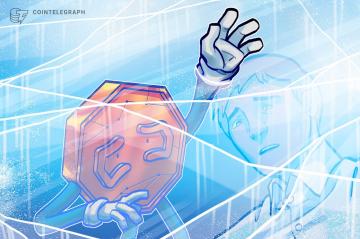Stablecoins cannot be compared to bank deposits in terms of risk, argues a new policy paper authored by former Federal Reserve Board analyst Brendan Malone on behalf of technology investment firm Paradigm.
The document explores the risks stablecoins pose to the financial system, noting that current legislative proposals in the United States could incorporate crypto payment instruments into existing banking and securities frameworks. Malone argues that the risks posed by stablecoins are lower than bank deposits and different from money market funds.
Stablecoins are cryptocurrencies programmed to have a stable value relative to a specific asset, generally a fiat currency like the U.S. dollar. A money market fund is a type of mutual fund that invests in short-term assets, cash and cash equivalents with a lower level of risk than other mutual funds.
According to Malone, banks are exposed to so-called maturity transformation when they accept short-term deposits and use those funds to offer long-term loans that are not repaid for years. The maturity transformation creates a continuous risk for banks and requires permanent risk management.
A recent example of risks associated with maturity transformation is the collapse of Silicon Valley Bank in March. The U.S. bank reportedly had client deposits allocated to long-term assets and had to be shut down by regulators following a bank run.
In Malone’s view, stablecoins pegged to a fiat currency do not inherently pose similar risks because their reserve assets are usually backed by short-dated Treasurys and segregated from the issuer’s assets. “Federal regulation implemented under new legislation can require specific safeguards. If so, then unlike bank deposits, there would be no duration mismatch between short-term liabilities (a stablecoin holder can redeem at any time at par on demand) and long-term or risky assets,” he explained.
 Total value settled with stablecoins by year worldwide. Source: CoinMetrics
Total value settled with stablecoins by year worldwide. Source: CoinMetricsStablecoins also serve very different purposes than money market funds. Malone argues that they are primarily used as a means of payment or transactions based on the U.S. dollar peg rather than as an investment option or a cash management vehicle. “For the largest U.S. dollar-pegged stablecoins, holders do not receive any return based on the reserves. Rather, the stablecoins are used as the equivalent of cash itself,” he writes.
Related: How and why do stablecoins depeg?
According to the paper, if stablecoins are regulated through existing frameworks without considering their unique characteristics, it will lead to strict bank-like oversight of stablecoin issuers. Such oversight could limit competition and increase the market dominance of a few large players.
“Regulatory guardrails can help preserve confidence in stablecoins as a form of money — and ensure that the power to dictate our system of money does not fall into the hands of a few market participants,” reads the document, adding that stablecoin legislation should address the technology’s specific risks while still allowing innovation.
Since 2022, at least 50 digital asset bills have been introduced to U.S. Congress, covering everything from stablecoins to U.S. regulatory jurisdiction. Several of these bills seek to regulate stablecoins, including the Stablecoin TRUST Act and the Stablecoin Innovation and Protection Act.
Magazine:Unstablecoins: Depegging, bank runs and other risks loom





























































